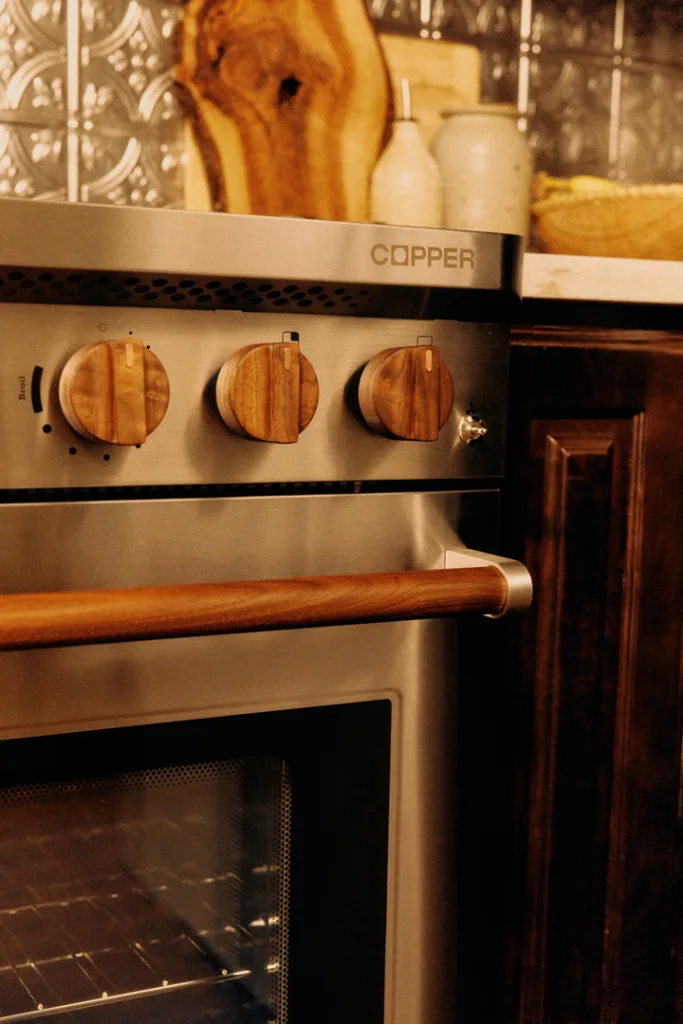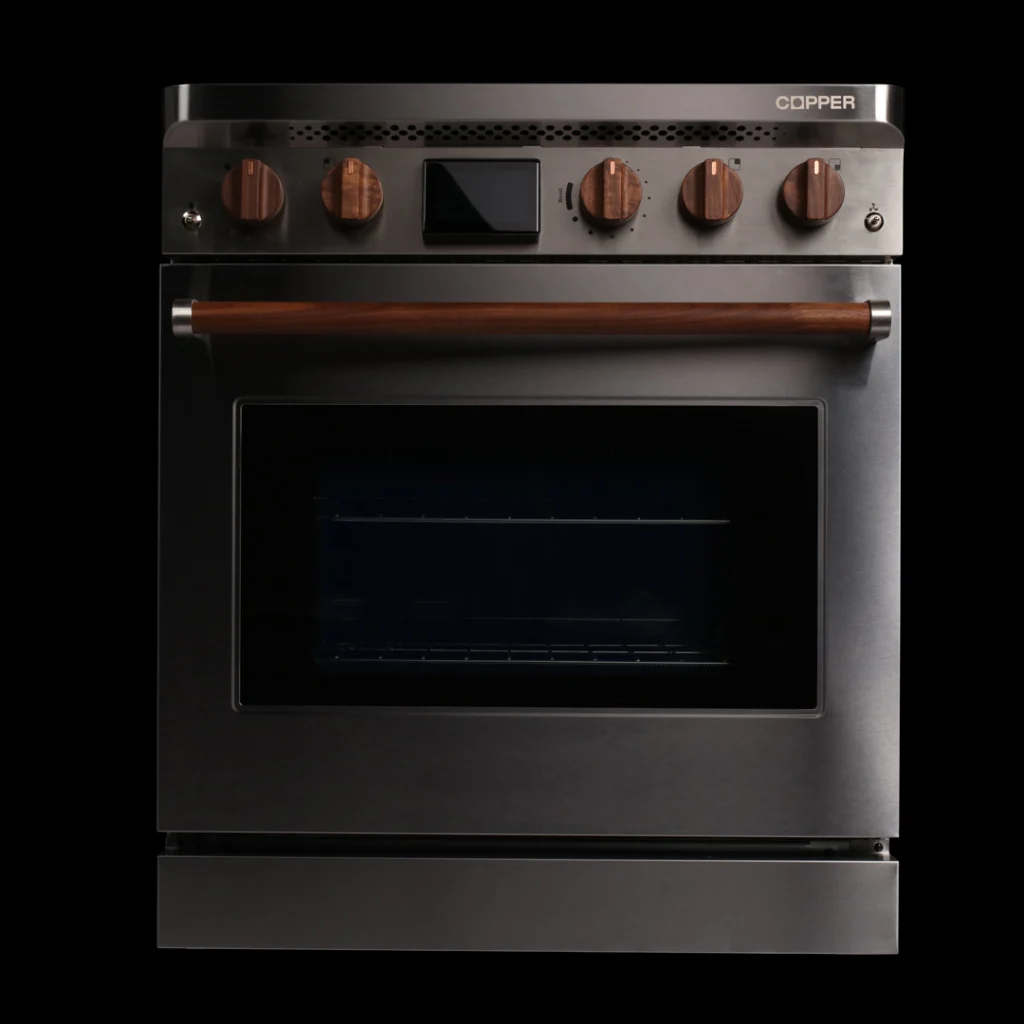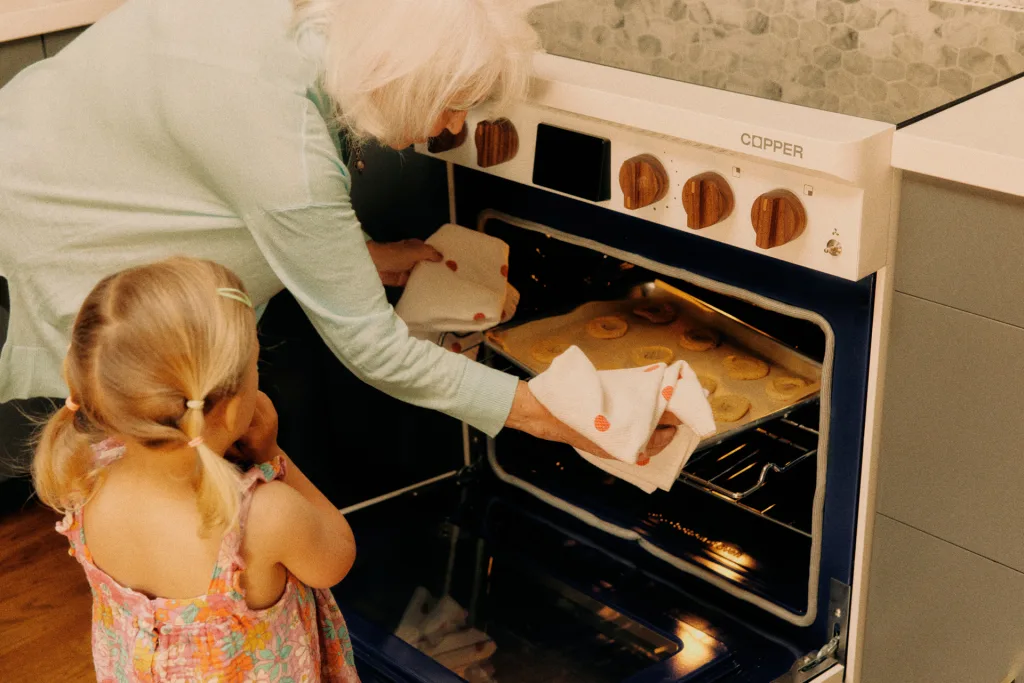If your power goes out, a new induction stove can keep cooking for more than a day—or as long as five days if you’re only cooking dinner.
The range, called Charlie, has a battery inside. That helps solve multiple challenges for people who want to make the switch from gas stoves to electric. First, it makes the equipment easier to install. Right now, replacing a gas stove typically means rewiring your kitchen (and tearing down drywall to make that happen). If you have an old house, the process is even more complicated.
“If your house was built before the ’80s, chances are you’re also going to have to upgrade the total amount of electricity coming into your home,” says Sam Calisch, cofounder of Channing Street Copper Company, also known as Copper, the startup that makes the new stove.

With most induction stoves, in order to support the electric load, you usually have to replace your electric panel. You might also need to upgrade the amount of power coming to your home from the street. In some cases, it could cost more than $10,000—far more than the stove itself—and because of the shortage of electricians, it can be hard to find someone to do the work. For older apartment buildings that want to electrify, the cost can be prohibitively high.
But because the new range has a battery, it’s possible to avoid those extra steps and just plug into an existing outlet. “You just plug and play—no need for a dedicated circuit or any electrical work,” says Calisch. Induction stoves need a lot of power for brief periods, but the battery can supply it. The tech is designed to charge the battery from the grid when the most renewable energy is available; in a place like California, it can store extra solar power during the day when it might otherwise be wasted. (Impulse, an induction startup from a former Facebook engineer, takes a similar approach.)

The battery helps make the range powerful. The oven heats up four times faster than a typical gas oven. Like other induction cooktops, the burners can boil water faster than gas. The burners are also more precise than gas—it’s possible to melt chocolate without using a double boiler, for example. While some induction stoves have an annoying buzz while they work, Charlie is silent. And if a storm temporarily takes out the grid, both the stovetop and oven can keep going, with enough stored power for three to five meals.
The inspiration for a new induction stove
Early in the pandemic, Calisch worked with engineer Saul Griffith on a book called Electrify, which argues that in order to tackle climate change we’ll need to electrify everything—including “personal infrastructure” like heaters and stoves. The book led to conversations with Congress that helped shape the Inflation Reduction Act (IRA), the biggest climate bill ever passed in the U.S.
“We tried to take that story and wrap it up as something a politician could run on—a platform that sounded good to their constituents that talked about savings on utility bills, and insulation from the volatility of fossil fuel markets, and home energy resilience,” says Calisch. “We found a lot of interest in that in Congress.” Calisch and others at Rewiring America, a startup nonprofit focused on electrification, worked with New Mexico Senator Martin Heinrich’s office as the IRA was drafted. But he realized that the IRA wasn’t going to move fast enough on one part of the solution: adding battery storage that’s needed on the grid.
“I could see that the IRA was going to under-incentivize deployment of batteries out in the world,” he says. “I knew that getting a lot of batteries out and working and supporting the grid was necessary for any version of decarbonization we were going to do. And they can’t all live on the grid because that would require overbuilding our transmission and distribution networks.”
He realized that adding a battery to household appliances could solve two problems. Appliances like an electric stove could perform better. And it could be a faster way to add distributed energy storage. “It turns out that appliances make it easier to deploy batteries, and batteries also make it easier to deploy appliances,” he says.
Because the battery can store extra solar power that would have gone unused, it helps the grid get cleaner. At dinnertime, when people get home from work and power demand peaks, the stove can run on that renewable energy instead of adding extra strain to the grid. Channing Street Copper Company may later introduce other appliances, like hot water heaters, that also include batteries.

Designing a better user experience
As they developed the stove, the engineers at Copper ran cooking sessions with everyone from chefs to children making their first omelets. They also carefully studied the problems with existing stoves. “We spent a lot of time cataloging all the things we hated about the induction that was on the market today,” Calisch says.

One common issue: touchscreen buttons. “People hate touchscreen buttons and menus, and navigating with wet fingers while they’re trying to cook and have a conversation with their kids or significant other,” he says. The new stove has classic knobs instead, made in walnut wood. Knobs are “a very intuitive way to control power,” he says. “You can get a lot of resolution out of them, and there’s no ambiguity about what they’re doing at any point in time.”
Others complained about the annoying buzz that happens on some induction stoves when electronics inside them interact with the household electric current—one of the problems that’s solved by adding a battery. Some potential customers also said that they were apprehensive about getting an induction stove because of the risk of power outages.
While some companies make induction cooktops without an oven, Copper wanted to make a simple replacement for a typical gas range. “Our goal is to help people transition off of fossil fuels,” Calisch says. “So we went right to where the most gas is today, and the most common gas range in America is the 30-inch freestanding range.”
Both the convection oven and the cooktop have better temperature control than the gas alternative. “The first time I made a grilled cheese on our stove, I was shocked,” he says. “I’d never made a grilled cheese that uniform and perfect golden brown.” When he makes falafel, he says, the oil stays at exactly the right temperature, never getting too hot and filling the kitchen with smoke.
Of course, there’s another advantage compared to gas: you can avoid polluting your kitchen air with nitrogen dioxide, carbon monoxide, formaldehyde, benzene, and other pollutants that can harm your health. And moving your house away from gas can help fight climate change.

Helping apartment buildings make the switch
Some of Copper’s first customers are apartment buildings with owners that want to upgrade their old equipment both for climate and health reasons. In Martinez, California, for example, one affordable apartment building plans to install the stoves as a final step in decarbonizing the building. “There’s a lot of desire to move in this direction, but not a lot of folks are doing it yet because it’s expensive,” says John Neal, an energy analyst for the Association for Clean Energy, a group that works with apartment building owners to help them reduce emissions. The Martinez building would have required costly upgrades with other electric stoves. But the Copper stove “is as good of a silver bullet as we’ve seen to solve the problem,” he says.
In New York City, a recent law requires apartment building owners to routinely test their gas systems. The old systems frequently fail. “In this case, they are forced to either fix the gas system or electrify,” says Calisch. “And we come in at about half the cost of just fixing the gas system. so these are really powerful points of intervention because doing nothing is not an option. And it’s kind of a historic chance to to retire gas from that building.”
Some developers are also interested in adding the stoves to new buildings. “The primary value there is just on project cost and timeline—if you don’t have to do distribution network upgrades, you can simplify your project a lot,” Calisch says. “It might seem improbable that the humble stove would make a difference, but these design constraints aren’t about total energy use—they are about peak power use. And the stove has a higher peak power draw than the water heater, almost all residential heat pumps, and most residential EV chargers.”
The company has sold hundreds of ranges so far, with the first production line starting to be delivered to customers now. It’s taking preorders for the next round of production. The appliances are pricey, starting at $5,999. But the batteries inside have one last advantage: they help the appliance qualify for a 30% tax credit. Clean energy rebates from the Inflation Reduction Act, which are slowly beginning to roll out in states, will be able to help more. Some local incentives can also help cut the price.